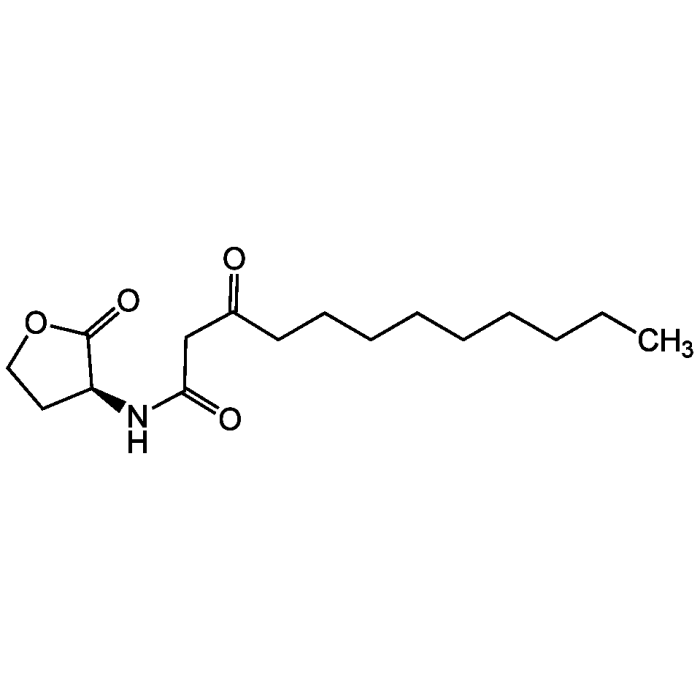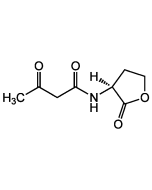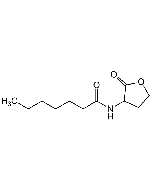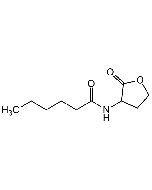Cookie Policy: This site uses cookies to improve your experience. You can find out more about our use of cookies in our Privacy Policy. By continuing to browse this site you agree to our use of cookies.
Chemodex
N-(3-Oxododecanoyl)-L-homoserine lactone

| Product Details | |
|---|---|
| Synonyms | 3-oxo-C12-HSL; 3OC12HSL; 3-Oxo-N-[(3S)-2-oxotetrahydro-3-furanyl]dodecanamide; N-(3-Oxododecanoyl) homoserine lactone; n-(3-Oxododecanoyl) L-homoserine lactone |
| Product Type | Chemical |
| Properties | |
| Formula |
C16H27NO4 |
| MW | 297.39 |
| CAS | 168982-69-2 |
| Source/Host Chemicals | Synthetic. |
| Purity Chemicals | ≥98% (NMR) |
| Appearance | White crystals. |
| Solubility | Soluble in DMSO (20mg/ml), DMF (20mg/ml) or chloroform. Ethanol or methanol are not recommended as solvents as they have been shown to open the lactone ring. |
| Identity | Determined by 1H-NMR. |
| Declaration | Manufactured by Chemodex. |
| Other Product Data |
Click here for Original Manufacturer Product Datasheet |
| InChi Key | PHSRRHGYXQCRPU-AWEZNQCLSA-N |
| Smiles | CCCCCCCCCC(=O)CC(=O)N[C@H]1CCOC1=O |
| Shipping and Handling | |
| Shipping | AMBIENT |
| Short Term Storage | +4°C |
| Long Term Storage | -20°C |
| Handling Advice | Protect from light and moisture. |
| Use/Stability | Stable for at least 2 years after receipt when stored at -20°C. |
| Documents | |
| MSDS |
 Download PDF Download PDF |
| Product Specification Sheet | |
| Datasheet |
 Download PDF Download PDF |
Quorum sensing agent. N-(3-Oxododecanoyl)-L-homoserine lactone (3-oxo-C12-HSL) is a small diffusible signaling molecule and is a member of N-acyl-homoserine lactone family. N-acylhomoserine lactones (AHL) are involved in quorum sensing, controlling gene expression, and cellular metabolism. The diverse applications of this kind of molecule include regulation of virulence in general, infection prevention and formation of biofilms. 3-oxo-C12-HSL is one of the AHLs frequently identified in extracts of respiratory secretions from cystic fibrosis patients infected with P. aeruginosa and/or strains of the B. cepacia complex. 3-oxo-C12-HSL activates the transcription factors NF-κB and AP-2 to induce interleukin-8 production in human lung fibroblasts and epithelial cells, possibly contributing to the neutrophil infiltration and inflammation found in P. aeruginosa infections.
(1) R.S. Smith, et al.; J. Immunol. 167, 366 (2001) | (2) E.A. Yates, et al.; Infect. Immun. 70, 5635 (2002) |(3) C.E. Chambers, et al.; FEMS Microbiol. Lett. 244, 297 (2005) | (4) G. Nakagami, et al.; FEMS Immunol. Med. Microbiol. 62, 157 (2011) | (5) V.K. Yadav, et al.; Int. J. Med. Microbiol. 308, 858 (2018)











